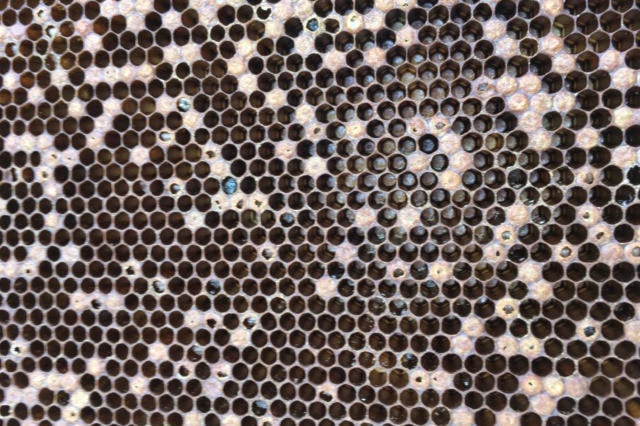Beekeepers in the Kootenays and the rest of the province are trying to figure out what’s killing growing bees in their hives.
First reported in the Kootenays about three years ago, a mystery illness has affected about four beekeeping operations in the region this year, devastating the colonies it infects.
“The most recent case around here was a fellow who had 12 hives,” says Axel Krause, the province’s apiary inspector for the West Kootenay/Boundary. “I saw those hives in the springtime and they were booming-strong hives, healthy and everything going well. It was looking really good for him honey-wise.
“Now 10 of the 12 are dead.”
Krause, who made that first report of the sickness, calls it “unknown brood disease” because it kills bees at all stages of development — from egg to larva to pupa.
“They die at various stages in that part of their life-cycle,” he says. “Which is abnormal. There are two other big brood diseases, as they’re called. In European foulbrood disease, the bees die early in their development. In American foulbrood they die later on, as they transform into adults. But in this one, they are dead anywhere from egg to pupa.”
It’s not something he’s seen in his decades of beekeeping.
“Just looking at a bee, I can often tell what the problem is,” he says. “But in this case it was not obvious.”
Krause has sent samples to provincial and national inspection laboratories, but says none have been able to conclusively say if what’s killing the bees is viral, bacterial, a parasite, or something completely unknown.
“In each case we’ve got the answer back ‘we can’t identify it, we don’t know what it is,’” he says.
So far this year, Krause, who’s also president of the West Kootenay Beekeepers’ Club, has seen three or four cases of the disease; in years past it was one or two annually.
“Speculation is the disease may be a virus, spread by mites that attach themselves to the bees,” he says. “But there’s also another possibility there’s a bacterium that has existed in the guts of bees forever, like we have bacteria in our intestines, as a peaceful co-inhabitant. They think it may have mutated and is now causing some problems.
“But the whole thing for the moment is still unknown. What is causing the brood to die, we don’t know.”
Krause says the consequences of another disease killing off bees could be a real problem.
“It’s very sad, especially since every third mouthful of food you put in your body comes from the help of a bee,” he says. “It’s another nail-in-the-coffin kind of thing.”
Krause plans to buttonhole researchers at an upcoming industry conference, to try to get them to get to the bottom of the mystery illness.
But for now there’s not much he can tell beekeepers to do.
“At the moment all I can say is keep an eye on your bees, and let me know as soon as you see anything,” he says. “I’m trying to send in as many samples as we have and make it known to my superior that maybe he can go the ministry and say ‘Hey look, this is turning into a big issue, and we need some research money to see what the cause is and how to handle this problem.’”
The one small blessing is that there’s no need for consumers to be concerned about the quality of the honey they get from local hives.
“This is not a disease that’s going to affect you,” he says. “The chances are very slim, going from one species of bee to another. But to go from a honey bee to a human, it’s virtually impossible. The bacteria — if that’s what it is — are very well adapted to the things they live in.”
